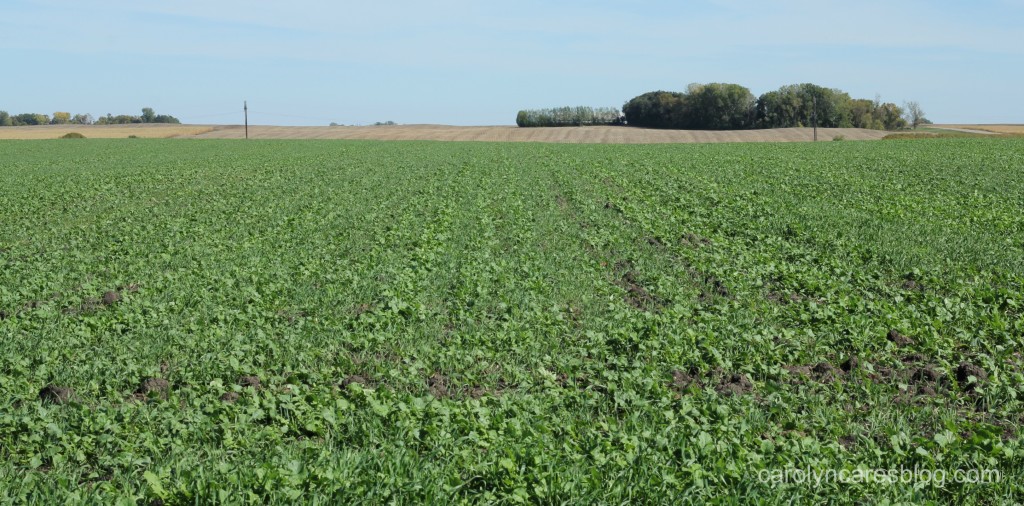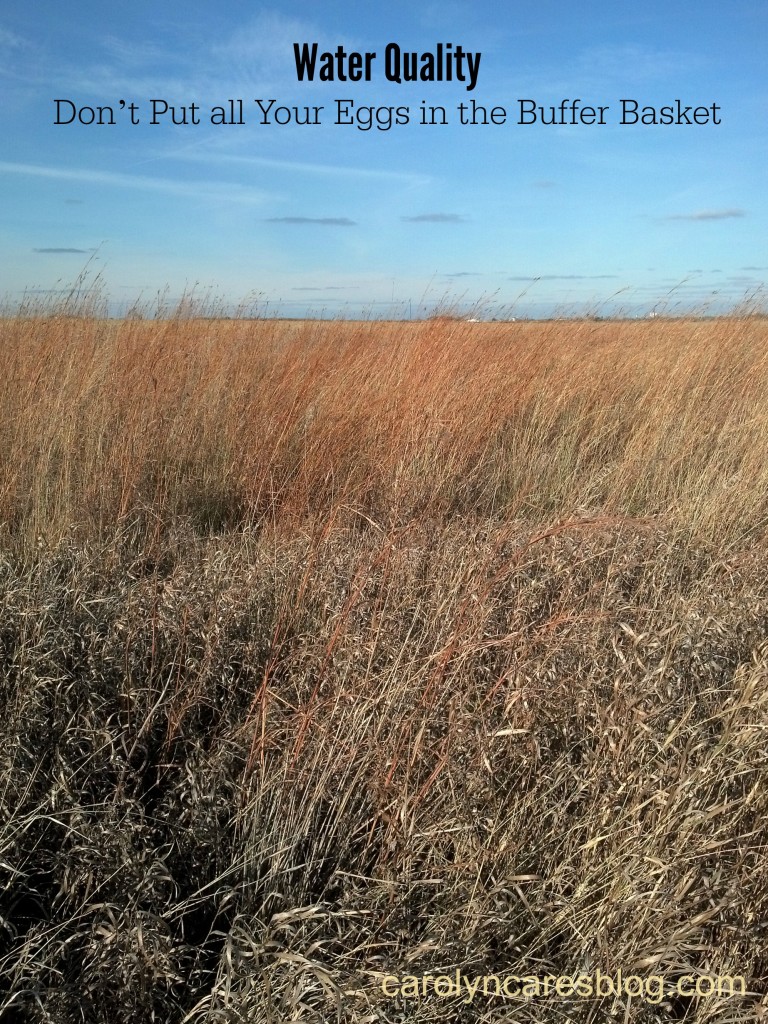In January, Minnesota’s Governor Mark Dayton announced a plan to require a 50 foot buffer strip along all rivers, streams, and drainage ditches in the state. Mandating a set buffer strip width for all of those waterways means topography, soil types, and surrounding land use will no longer be determining factors in buffer strip width. This one-size-fits-all approach won’t improve water quality like we’ve been told it will.
The NRCS (Natural Resources Conservation Services) published a report in 2000 that talked about the different types of water control features that would help trap soil, nutrient, and pesticides, which would help to improve water quality. In the report, they stated how using multiple methods was more effective than a single method for controlling water flow, water filtration, and pesticide trapping. Many improvements have been made in the 15 years since this report was published. Let me highlight a few for you.
Cover crops
The use of cover crops is a relatively new trend in our area. Cover crops are a blend of plants grown for their ability to prevent soil erosion, manage water and water quality, suppress weeds, and hold soil nutrients in place. We plant our cover crops right after our wheat is harvested which will give the plants enough time to grow well and be more effective. Other farmers will use airplanes to spread the seed before their row crop is harvested. In the 14 years that we have been growing cover crops, we have experimented with different seed mixes until we found what works best on our soil. The combination of tillage radishes and oats that we use provides two very different types of plants which is also beneficial for wildlife. The deer graze on the tillage radish leaves, and pheasants use the taller oats for cover. This is a win-win for water quality, soil health, and wildlife.
Field Mapping
Global Positioning Systems (GPS), broadband internet, and computers in combines and tractors have made it possible to create accurate maps of every field. These maps are uploaded onto a computer, where we can then work with our local agronomist to determine what recipe each field needs to grow the crop that will be planted in it. Each recipe will be different for each field, depending on what we will be growing, the results of our soil and plant tissue tests, and the yield data from the year before. Our corn and wheat both need manure applied to supply the nutrients that the plants need to grow well. However, they do not require the same amount of manure, so we follow the recipes to make sure we are not using too much manure on the fields. We like to use cover crops as part of our recipe for our corn fields, since the tillage radish helps to keep the nutrients from the manure where the corn roots will be. This combination of conservation methods works great over an entire field to keep soil and nutrients from eroding, and doesn’t just rely on the last 50 feet before a water way.
Precision Equipment
Fifteen years ago, I never imagined all of the things computers and information technology could do for agriculture. Of course, at that time, I was still using a Nokia cell phone with an external antenna, and the iPhone was still 7 years away from being released. Now, besides most farmers having smart phones, there are computers in tractors, fertilizer spreaders, and sprayers. These computers allow farmers to use their field recipes as they are driving up and down the fields, many times driving with the aid of GPS auto guidance systems. The Precision Planting computer we have in our tractor helps our planter keep the seed planting depth at the perfect level through the variations in the firmness of the soil, varies the amount of seeds per acre according to soil type, and will shut off boxes at the end of the rows or where the rows overlap on curves so we don’t waste seed. We work with our Precision Planting Specialist to make sure our recipes are entered into to the computer correctly, and that the equipment is communicating with the computer. Fertilizer spreaders with variable rate technology are used by our friends. Their field maps and recipes are loaded into the computer, and the fertilizer is spread where it is needed. A similar system is used with sprayers when applying pesticides. The field map can be set up to avoid spraying in certain sensitive areas, and to avoid overlapping the spray with auto shut off valves. We don’t use fertilizer spreaders or sprayers on our farm, so I would encourage you to go to your favorite farmer or The Farmer’s Life if you have questions.
Flexibility is needed
On our farm, we have planted some buffer strips with the help of our NRCS Conservationist and local Soil and Water Conservation District (SWCD). On one ditch where the ditch bank rises to the edge we have a very narrow grass buffer, which is all that is needed. We are also using cover crops, field mapping, and precision equipment. This multi-pronged approach to water quality, soil health, and wildlife habitat is a better approach than a mandate of every river, stream, and drainage ditch needing a 50 foot buffer. Some ditches or streams do not need a grass buffer, while some could benefit from one that is greater than 50 feet. Every farmer should be able to figure out what conservation practices will work best on their farm, and should be able to change those practices when needed. Farmers want to be able to hand down their land to the next generation. To do that, we need to care for the soil and water in the best ways we can. Putting all of our water quality eggs into one basket isn’t the best way to achieve that.
To read more on how this buffer strip proposal would affect Minnesotans, I highly recommend that you read this post by Sara Hewitt.

